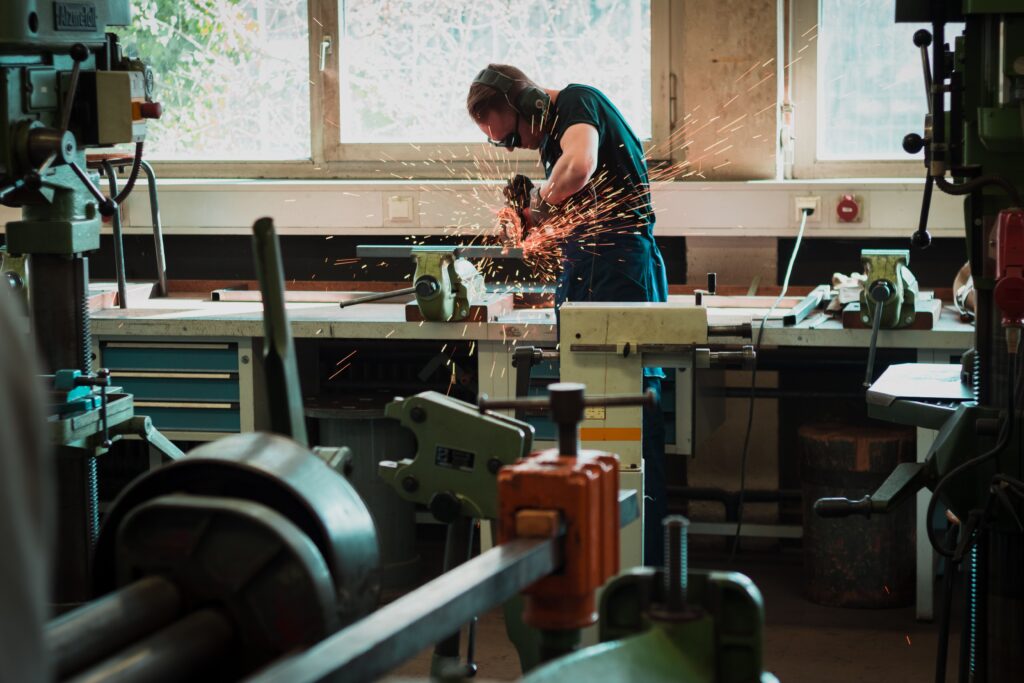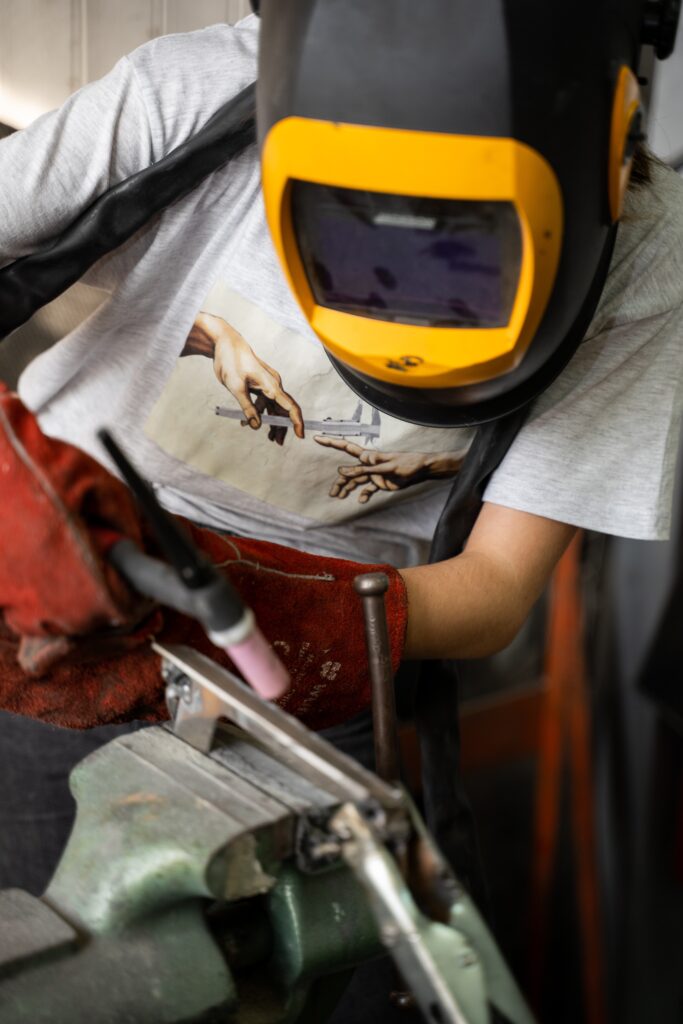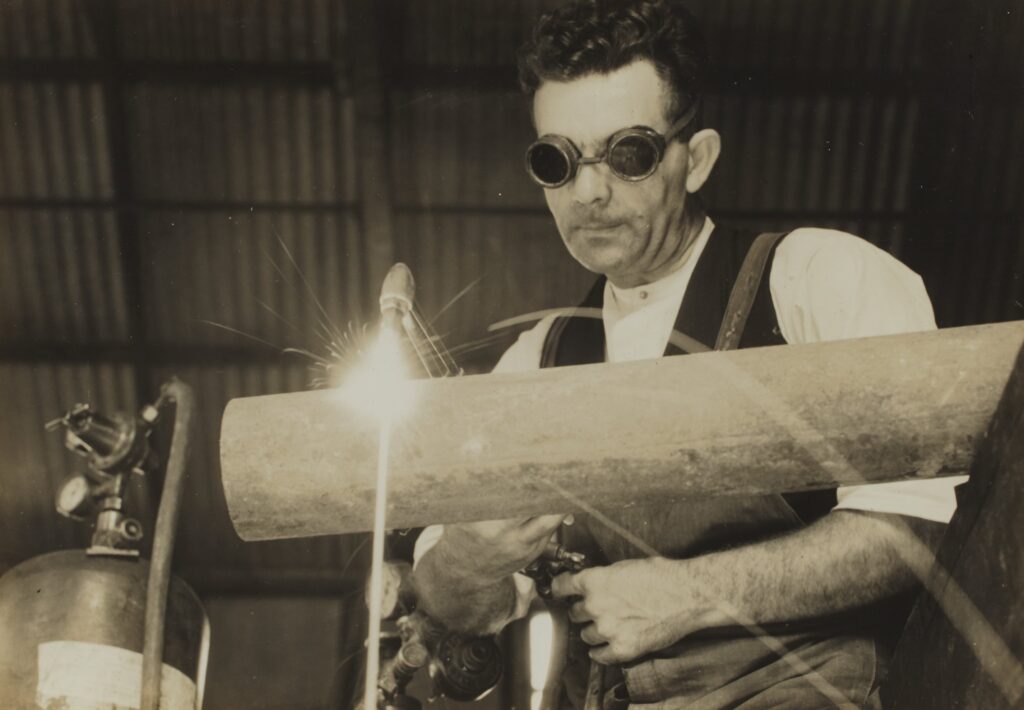Get ready to explore a topic that’s been on the minds of many in the industrial world. “Is There A Shortage Of Welders In The US?” is not just a question, but a comprehensive look into the American welding industry. With this comprehensive guide, you’ll discover everything you need to know about the current state of the sector, its workforce, and understand the implications of a potential gap between supply and demand. Buckle up for an insightful journey where sparks of knowledge fly!

Understanding the Welding Industry
Brief overview of the welding industry
The welding industry is an essential part of various sectors, particularly in manufacturing, construction, and automotive industries. Welders play a crucial role in constructing and maintaining infrastructure such as bridges, buildings, vehicles, and even aircraft. The industry consists of skilled professionals who melt and fuse metal parts together, using high heat tools to create or repair products and structures.
Types of welding jobs
There is a wide variety of roles within the welding industry. For instance, there are welder fabricators who create layouts and schematics, as well as assembling these into final products. Pipe welders work in settings like oil rigs or pipelines, focusing on round objects and tubes. A structural welder’s job is to ensure sturdy and reliable construction in infrastructure. There are also underwater welders who need diving expertise in addition to their welding skills as they repair structures beneath the water’s surface.
Required skills and qualifications for welders
To become a welder, you need a unique skillset. Obviously, practical welding skills are needed which can be acquired through vocational training or apprenticeships. Furthermore, skills such as dexterity, physical strength, stamina, and attention to detail are necessary to perform the job effectively. As for qualifications, typically a high school diploma followed by specific vocational training in welding is required. Various certifications may also be preferred by employers, demonstrating a tool-specific proficiency for a welder.
Current State of the Welding Industry in the US
Number of welding jobs available
There are currently hundreds of thousands of welding jobs available across the United States. However, there has been recent concern about the shortage of skilled professionals to fill these roles, which we will delve into later in this article.
Geographical distribution of welding jobs in the US
Welding jobs are spread throughout the United States, but there is a higher concentration in states with robust manufacturing and construction sectors. These include states such as Texas, California, and Ohio, which have high demand due to their established industries requiring welding work.
Growth trend in the welding industry
The welding industry has been steadily growing over the past few years. According to Bureau of Labor Statistics, the demand for welders is expected to rise over the coming years, showcasing the strong growth pattern in this sector.

Demand and Supply of Welders in the US
Current demand for welders in the US
The demand for skilled welders in the US remains robust, driven by various industries including manufacturing, construction, and automotive. This high demand, however, is currently confronted by a lack of skilled professionals, leading to a potential shortage issue.
Current supply of welders in the US
Unfortunately, the supply of skilled welders in the US is not meeting the demand. The current pool of welders is seen to be insufficient, leading to the issue of a welder shortage that needs urgent attention.
Factors affecting the demand and supply of welders
Several factors affect the demand and supply of welders in the US. Industry growth and expansion have driven demand, while factors such as an aging workforce and a lack of interest in the field among younger generations have impacted supply. Economic trends and policy changes can also affect both demand and supply patterns.
Evidence of Welder Shortage
Statistics indicating a welder shortage
It’s important to look at concrete figures indicating the issue of welder shortage. According to the American Welding Society, it’s estimated that there will be a shortfall of over 400,000 welders by 2024 in the US. The Bureau of Labor Statistics also predicts job growth, pointing to increased demand and a potential shortage.
Employer testimonies
Many employers in the industry have expressed their difficulty in finding skilled welders, further illustrating the welder shortage. Their testimonies are vital evidence that points towards an industry grappling with a gap in supply and demand.
Impact of welder shortage on businesses
The welder shortage is having a significant effect on businesses. Without sufficient supply, many projects suffer delays, driving up costs. This can reduce competitiveness and profitability for businesses dependent on welding.

Reasons For The Shortage Of Welders
Aging workforce
A significant factor contributing to the welder shortage is an aging workforce. As many experienced welders are nearing retirement, there’s a concern about who will fill these vacated positions.
Lack of interest among younger generations
There has been a lack of interest among younger generations in pursuing welding as a career. Many are opting for college degrees over vocational training, leading to fewer newcomers in the welding industry.
Inadequate vocational training programs
In many areas, vocational training programs have not been able to keep up with the high demand for welders. The lack of comprehensive and accessible programs has led to a limited supply of qualified professionals.
High industry turnover rate
The welding industry is known for its high turnover rate. Many professionals leave due to challenging working conditions and insufficient compensation considering the skill level required.
Economic factors
Economic crises and downturns can have a significant effect on the welding industry, leading to layoffs and decreased demand. However, when the economy recovers, the industry often struggles to meet increased demand due to a lack of skilled workers.
The Impact of Technological Advances on Welder Shortage
Emergence of automated welding
While automation has streamlined many processes in manufacturing, it’s not a complete solution to the welder shortage. Automated welding can handle repetitive tasks, but complex welding procedures still require manual expertise.
Welding innovations and their impact on job demand
Newer, more efficient welding techniques are constantly emerging, changing the needs of the industry. As these methods become more common, the demand for traditional welding skills may decrease, but increased demand for specialized skills can still contribute to a shortage.
Upskilling requirements due to technology advancements
Technological advances in the industry mean that welders need to continuously upskill to stay relevant. This does provide opportunities for better work, but it also raises the entry barrier for new professionals.
Efforts to Resolve the Welder Shortage
Initiatives by government
The government has implemented programs to train new welders and fund apprenticeships. They also offer initiatives aimed at veterans and others seeking a career shift, encouraging them to consider welding.
Programs by welding industry associations
Industry associations are also trying to address the shortage, with initiatives such as scholarship programs, competitions, and campaigns to promote welding as a career option.
Private sector initiatives to attract more welders
Many companies are offering competitive packages and benefits to attract welders. They’re also investing in training programs to upskill their current workforce and broaden the skills pipeline.
Possible Solutions to the Welder Shortage in the US
Promotion of welding as a viable career
There’s a need for increased promotion of welding as a viable and rewarding career path. This can be done through career fairs, advertising, and increased awareness in schools.
Educational programs and apprenticeships
An increase in high-quality educational programs and apprenticeships can help supply more skilled workers to the industry. Schools, colleges and trade schools should be incentivized to offer more programs in this sector.
Retraining and upskilling current workforce
Retraining and upskilling the current workforce can bridge the gap between demand and supply. Focused training programs can equip workers with the latest skills needed in the industry.
Promoting diversity in the welding field
Promoting diversity in the field can broaden the pool of potential workers. Initiatives to encourage women and underrepresented groups to consider welding as a career could significantly alleviate the shortage.
Impact of the Welder Shortage on the US Economy
The effect on overall employment rates
While a shortage of welders can increase unemployment rates, it also offers an opportunity for jobs for those willing to get trained and enter the field thereby balancing the workforce in the country.
Impact on industries dependent on welding
The shortage of welders has a direct impact on industries like construction, manufacturing and repair services. Delays in projects can lead to financial losses, reducing the overall productivity of the economy.
Projected economic outcomes if the shortage continues
If the welder shortage continues, it could restrict growth in vital sectors, hampering economic development. Thus, resolving the shortage is integral to national economic health.
Conclusion: The Future of Welding in the US
Expert predictions for the future of the welding industry
Experts predict that there will continue to be a high demand for skilled welders in the US in the coming years. However, the gap between supply and demand could narrow if concerted efforts are made to attract new entrants to the field.
Potential changes in supply and demand
Supply and demand dynamics may shift due to factors like technological advancements and changing economic conditions. However, the overall demand for trained welders is expected to remain strong.
The role of innovation and advances in technology in the welding field
Innovation and technology will play an increasingly important role in the welding sector, possibly leading to changes in job roles and skill requirements. A focus on upskilling and continual learning will be vital for those in the field.
Despite the current challenges, the future of the welding industry in the US looks bright. With the right initiatives to attract and retain talent, and to adapt to changes in technology, a new generation of skilled welders can ensure the industry continues to thrive. To anyone looking for a rewarding, hands-on career, welding might be just the ticket.
